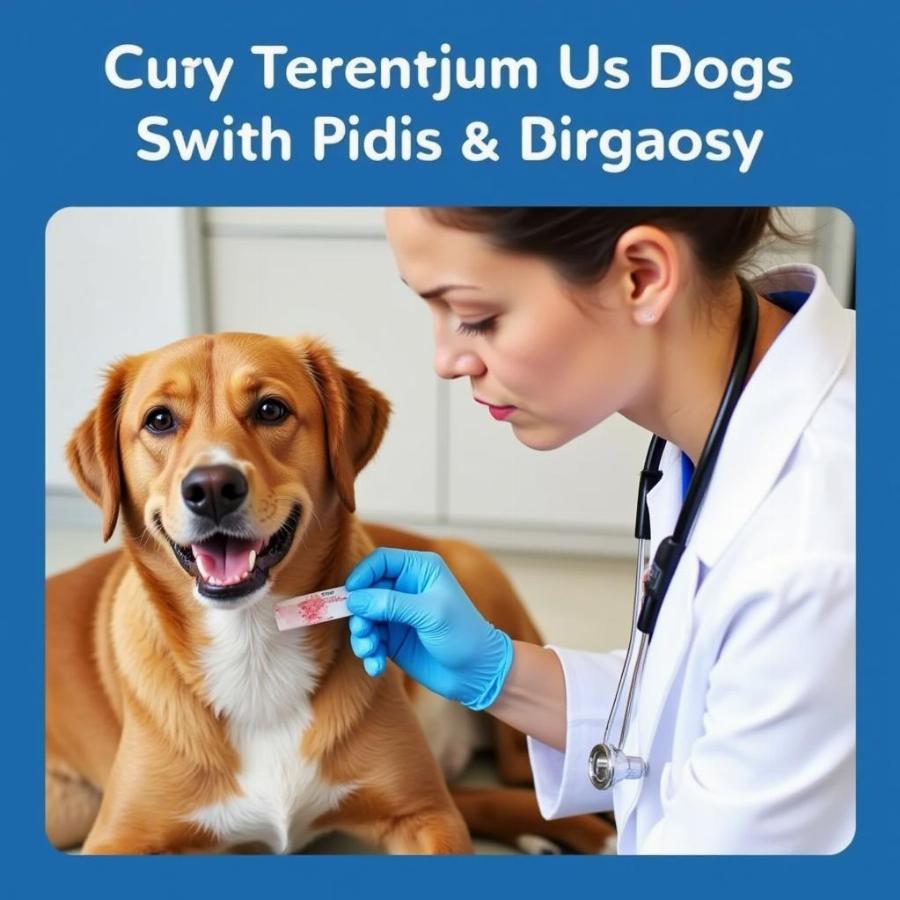Epitheliotropic lymphoma (epitheliotropic lymphoma dog) is a rare and challenging form of cancer affecting a dog’s skin. Unlike systemic lymphoma, which affects internal organs, this type focuses on the epidermis, causing a variety of skin issues. Understanding this complex disease is crucial for pet owners facing this diagnosis. This guide will delve into the symptoms, diagnosis, treatment options, and prognosis of epitheliotropic lymphoma in dogs, providing you with valuable insights and resources to navigate this challenging journey.
Understanding Epitheliotropic Lymphoma in Dogs
Epitheliotropic lymphoma, sometimes referred to as cutaneous lymphoma or mycosis fungoides, is a type of non-Hodgkin’s lymphoma. It’s characterized by the infiltration of cancerous lymphocytes (a type of white blood cell) into the epidermis, the outer layer of the skin. This differs from systemic lymphoma, which typically involves lymph nodes and internal organs. While less common than other forms of canine lymphoma, epitheliotropic lymphoma can be a serious concern, requiring careful diagnosis and management.
Recognizing the Symptoms: How to Spot Epitheliotropic Lymphoma
The symptoms of epitheliotropic lymphoma can be varied and often mimic other skin conditions, making early diagnosis difficult. Common signs include redness, scaling, itching, hair loss, and ulcerations on the skin. These lesions may appear in localized patches or be more widespread. In some cases, the dog may also experience swollen lymph nodes. Because of the non-specific nature of these symptoms, it’s crucial to consult a veterinarian for an accurate diagnosis.
What are the early signs of epitheliotropic lymphoma in dogs?
Early signs often include redness, scaling, and itching, often mistaken for allergies or dermatitis. These symptoms can be subtle at first, making it crucial to monitor any skin changes in your dog and seek veterinary attention if they persist.
Diagnosing Epitheliotropic Lymphoma: What to Expect
Diagnosing epitheliotropic lymphoma requires a thorough veterinary examination. Your vet will likely perform a physical exam, evaluate the dog’s medical history, and recommend diagnostic tests. These may include skin biopsies, cytology, and potentially blood tests to rule out other conditions and assess the extent of the disease.
 Epitheliotropic Lymphoma Biopsy Procedure in Dogs
Epitheliotropic Lymphoma Biopsy Procedure in Dogs
How is epitheliotropic lymphoma diagnosed in dogs?
The definitive diagnosis comes from a skin biopsy, where a small tissue sample is examined under a microscope to confirm the presence of cancerous lymphocytes in the epidermis.
Treatment Options and Prognosis
Treatment options for epitheliotropic lymphoma vary depending on the stage and severity of the disease. Common approaches include chemotherapy, radiation therapy, and topical medications. In some cases, a combination of therapies may be recommended. The prognosis for dogs with epitheliotropic lymphoma can vary depending on the individual case and response to treatment. Early diagnosis and intervention often lead to a better outcome.
What are the treatment options for epitheliotropic lymphoma in dogs?
Treatment typically involves chemotherapy, sometimes combined with radiation therapy or topical medications. The specific protocol depends on the individual dog’s condition and response to therapy.
Living with Epitheliotropic Lymphoma: Managing Your Dog’s Care
Managing a dog with epitheliotropic lymphoma requires diligent care and attention to their comfort. Regular veterinary checkups are essential to monitor the disease progression and adjust treatment as needed. Providing a supportive and comfortable environment for your dog can significantly improve their quality of life. This includes maintaining good hygiene, managing any discomfort associated with skin lesions, and providing a nutritious diet.
Conclusion
Epitheliotropic lymphoma in dogs is a complex disease requiring specialized veterinary care. While the diagnosis can be daunting, understanding the symptoms, diagnosis, and treatment options can empower owners to make informed decisions for their beloved pets. By working closely with your veterinarian and providing supportive care, you can help your dog navigate this challenging journey and maintain the best possible quality of life. Remember, early detection is crucial, so don’t hesitate to consult your veterinarian if you notice any unusual skin changes in your dog.
FAQ
- Is epitheliotropic lymphoma contagious? No, epitheliotropic lymphoma is not contagious to other animals or humans.
- What is the average survival time for dogs with epitheliotropic lymphoma? The survival time varies depending on the individual case and response to treatment.
- Are certain breeds more prone to developing epitheliotropic lymphoma? There isn’t a strong breed predisposition identified for this type of lymphoma.
- Can diet play a role in managing epitheliotropic lymphoma? A nutritious diet is important for overall health and can support the immune system, but it doesn’t cure the disease.
- What are the signs that epitheliotropic lymphoma is progressing? Increased skin lesions, worsening symptoms, or changes in lymph node size can indicate progression.
- How can I make my dog comfortable during treatment? Providing a clean, comfortable environment and managing any skin irritation can help.
- Are there any alternative therapies for epitheliotropic lymphoma? Discuss any alternative therapies with your veterinarian to ensure they are safe and appropriate.
Beaut Dogs is your trusted resource for comprehensive and reliable information on all aspects of dog ownership. From breed selection to specialized care, we’re here to support you every step of the way. For further assistance and personalized guidance regarding epitheliotropic lymphoma in dogs, please contact us at Email: [email protected]. Beaut Dogs is committed to providing you with accurate and helpful information to ensure the well-being of your canine companion.